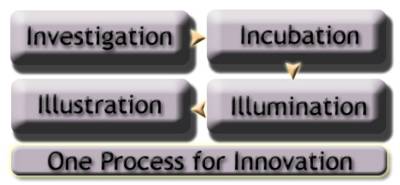

|
| recent entries |
| monthly archive |
|
|
| innovation links |
|
- Optimus Solutions
- worthwhile magazine - Gautam Ghosh's Blog - Times 100 case studies - innov.net innovation blog - corporate innovation blog - ideaflow by Renee Hopkins - good-morning thinkers blog - innovation tools by Chuck Frey - FastCompany innov station - heads-up on organizational - if++ acrologic - CPH127 - ideabroker |
| changethis manifestos |
| design links |
|
- aside design blog
- k10k.net : kaliber 1000 - DeskTopPublishing - Jason Kottke : kottke.org - design observer - FastCompany design - creative behavior e-magazine - 37signal blog - hewn & hammered - mocoloco design - design is kinky - u. r. beautiful - design weblogsinc - graphic design resource - asterisk: Keith Robinson - a list apart - stencil revolution - design e-group: YahooGroups - graphic design forum |
| other links |


|
| all links are in green: when you take your mouse-pointer over a link,
it turns blue with a dashed gray underline. links in the post-body are also
dash-underlined. all links to useful information within the blog are under the *blog navigation* sidebar on the top-right. the topmost right-corner advertises the yellow pages service provided by my parent organization, InnovationNetwork. the ASIDE Innovation Blog does not advertise for third-parties and there are no pop-ups associated with the blog. for any complaints kindly e-mail me at asideblog [at] gmail [dot] com. Naina Redhu has no liability for the contents on the pages of the weblinks under the *innovation*, *design* and *other* categories. the *ideas@aside* logo is the sole-property of ASIDE and Naina Redhu and is copyrighted under the Creative Commons like the rest of the graphics and writing existing on the ASIDE Innovation Blog. the blog has been optimized for Internet Explorer and uses websafe colors. the color scheme has been extensively researched for eye-safety for on-screen viewing as well as for the impact of colors on the brain. the colors on this weblog are suitable for a stress-free read and will relax all five senses. comments relating to subject-matter under innovation / creativity and design / colors are welcome. |
ASIDE
is powered by Blogger
